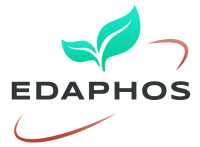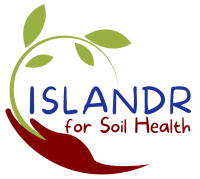
EU Bioremediation cluster
The EU Bioremediation cluster gathers the 6 ongoing projects funded by the European Commission. These projects are: Mibirem, Symbiorem, Biosysmo, Nymphe, Edaphos, and Islandr. The event will showcase the tremendous potential of bioremediation in creating healthier soils, cleaning up groundwater, and improving air quality. This environmentally friendly approach relies on natural processes and microorganisms to remove contaminants without causing harm to delicate ecosystems.

BIOSYSMO develops a computationally-assisted framework for designing and optimizing synergistic biosystems combining the required pathways and traits to achieve the most efficient degradation and sequestration of pollutant mixtures. These biosystems comprise of combinations of bacteria, fungi and plants containing the natural or engineered pathways required for pollutants degradation and identified based on a computationally-assisted analysis. BIOSYSMO will take advantage of the high natural microbial diversity by screening samples from polluted sites and locations affected by diffuse pollution to identify natural microorganisms already present and able to metabolize the target pollutants. The constructed biosystems will be optimized for the treatment of mixtures of pollutants in soil, sediments and waters through conventional (phytoremediation, biopile, bioaugmentation) and innovative (BES, hybrid BES-phytoremediation) bioremediation approaches.

Nymphe is a four years European project dedicated to tackling environmental pollution by developing innovative bioremediation solutions.
The ambition is to remove multiple pollutants (such as microplastics and pesticides in the agricultural soil, and chlorinated solvents and petroleum hydrocarbon in groundwater and sediments in the industrial area) from different contaminated sites in Europe. Nymphe’s actions will improve the ecological quality and health of soils and waters. Utilizing nature-based, low-energy, and low-chemical solutions to eliminate pollutants will contribute to the expected outcomes of the EU Zero Pollution Action Plan.

The presence of pollution in water, sediments and soil poses multiple risks to human, animal, and ecosystem health, contributing to diseases and biodiversity loss.
The EU-funded SYMBIOREM project (Symbiotic, circular bioremediation systems and biotechnology solutions for improved environmental, economic, and social sustainability in pollution control) aims to use the bioremediation capabilities of microorganisms and plants to remove pollution from the environment.
SYMBIOREM integrates in its diversified approach different bioremediation techniques, such as bioaugmentation, biostimulation, and phytoremediation. With a focus on the four most common pollutants of soil and groundwater in Europe, as well as on mixed contamination, eutrophication, organic micropollutants, and microplastics, SYMBIOREM is developing a suite of bioremediation strategies. These strategies are designed to not only clean-up and restore contaminated soil and water but also to enhance bioremediation efficiency, use secondary inputs, and valorize residues and contaminants.
Through its case studies in Europe and the US, SYMBIOREM will concretely demonstrate the advantages of bioremediation over physical and chemical methods of remediation, both in environmental and in economic terms.
In the face of daunting environmental challenges, SYMBIOREM stands as a symbol of collective resilience and of commitment to a cleaner, healthier, and more sustainable future.

MIBIREM
Contaminated sites pose a significant risk to humans and the environment. Innovative cleaning technologies are needed to remediate these sites and remove contaminants such as cyanides, hexachlorocyclohexane (HCH) and petroleum hydrocarbons (PHC).
Bioremediation uses living organisms like microbes (including bacteria), to digest and neutralise environmental contaminants. Like the microbiome in the gut, which supports the body in digesting food, microbiomes in contaminated sites can produce enzymes that degrade organic contaminants in soil and groundwater.
The EU-funded MIBIREM project will exploit microbiomes for bioremediation of contaminated sites. MIBIREM will develop a unique and innovative technological toolbox for microbiome-based bioremediation to clean up contaminated sites across Europe.

Soils are the backbone of healthy and vibrant ecosystems, providing substrates and physical, chemical and biological functions necessary for life. But soils are constantly threatened by pollution, creating a significant risk to human health and terrestrial and aquatic ecosystems. The EU Soil Strategy 2030 sets out a framework and concrete measures to protect, restore and ensure that soil is used sustainably. It sets out a vision and targets to achieve healthy soils by 2050, with concrete actions by 2030.
Coordinated by the University of Bourgogne Franche-Comté, the Horizon-Europe EDAPHOS project aims to implement innovative technologies for monitoring polluted soils and nature-based restoration to accelerate their restoration and ensure that the processes developed can be integrated into a commercial offer. It is endowed with 7 million euros over 4 years as part of Horizon Europe's "Soil Health and Food" mission.

ISLANDR aims to promote the delivery of Green Deal objectives, in particular achieving Zero Pollution by reducing soil pollution and enhancing restoration. ISLANDR provides a series of tools and methods to support: (1) the delineation of soil pollution sources, (2) the assessment of risks, (3) the implementation of sustainable and risk-based land management (SRBLM), (4) the inclusion of wider valuation approach in financial and investment cases, (5) closer integration of land contamination and spatial planning decision-making and (6) key policy relevant findings related to the Soil Strategy, proposed soil health law and other areas of policy where soil is a crucial consideration. Remediation technologies need to be applied in the context of achieving sustainable and risk-based land management with proper consideration of source-pathway-receptor linkages and alignment with the internationally developing themes of sustainable and resilient information, as described in ISO 18504:2017. ISLANDR is working on the integration into SRBLM of emerging strong interests of improving soil health, the application of low input remediation techniques (such as nature based solutions; nature based systems are an example of bioremediation) and the use of holistic concepts of value in driving remediation investment decision making. These interests have strong influence in academic and policy discussions, but as yet only limited penetration into the practical day to day business of contaminated site management practitioners. ISLANDR seeks to directly address this deficit. The project is developing a stakeholder-orientated road-map from the identification of potential problem sites or areas, through site investigation, risk assessment, risk management, investment decision-making, linkage to related decision domains – in particular spatial planning, and into nuanced and targeted policy briefings. It will provide a package of more specific guidance and decision tools in support of this road map. ISLANDR plans to equip practitioners with scalable information depending on their stakeholder role, their (self-identified) skill level and the project stage they are involved with.
